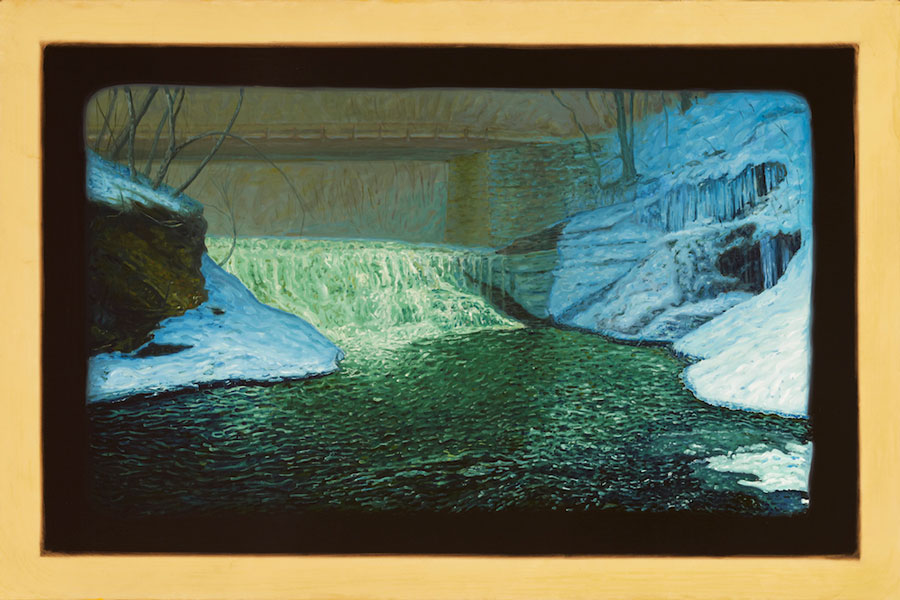Campus to host virtual art exhibition on waterways
'Biological Regionalism' explores streams and rivers

The University of Pittsburgh at Bradford will host an online exhibition featuring waterways of Western New York and beyond from Nov. 1 through Dec. 10 at upb.pitt.edu/TheArts.
The exhibit by Cuban-born artist Alberto Rey includes a series of large paintings, water samples and related data, historical information, ecological research, large maps, videos and process work samples. The exhibition explores the history and present condition of the Scajaquada Creek, which flows freely before being diverted through a three-mile tunnel beneath the city of Buffalo.
“The objective of the exhibition is to bring the language of both art and science to bear upon a complex of cultural, social, economic, technological and geopolitical issues,” said Dr. Anthony Bannon, executive director of the Burchfield Penney Art Center in Buffalo, where the exhibition was shown as an installation in 2014.
Rey, an avid angler and Orvis guide, has explored other waterways as part of his “Biological Regionalism” series of exhibitions, including the Oswego and Genesee rivers and Lake Erie tributaries in New York State, the Bagmati River, a sacred river in Nepal; bayous, lakes and rivers of Monroe, La.; Big Mary’s Creek in Vesuvius, Va.; Atlantic cod in Salem, Mass.; and bull trout in the Cascade Range in Oregon.
His illustrations and artwork have graced the pages of Gray’s Sporting Journal, Art of Angling Journal, Fish and Fly Magazine, American Angler, Saltwater Fisherman and Angler’s Journal.
He is the founder of the Children in the Stream 4H Youth Fly Fishing Program, which is open to community members of all ages.
Rey is an accomplished multi-media artist with works in the permanent collections of the Albright-Knox Museum in Buffalo, Brooklyn Museum of Art and Bronx Museum of Art. He teaches at State University of New York at Fredonia and is director/curator of the Chautauqua Center of the Visual Arts at Chautauqua Institution.
--30--